|
Today President Trump nominated Judge Amy Coney Barrett to replace Supreme Court Justice Ruth Bader Ginsburg who passed away last week. The Constitution gives the president the right to nominate and appoint Supreme Court Justices with the advice and consent of the Senate. What makes this nomination unusual is the fact that the presidential election is only 38 days away. There has never been a nomination made for a vacancy to the Supreme Court this close to a presidential election. Senate majority leader Mitch McConnell (R-Kentucky) has said in recent days that President Trump’s nominee will receive a vote on the floor of the United States Senate. All indications are that the confirmation hearings will begin the week of October 12, and a final vote by the full Senate should take place by the end of the month, a few short days before the election. The Senate has a constitutional duty to fulfill this function, so what is the problem? Blocking President Obama’s Supreme Court Nominee: Within an hour of the death of Supreme Court Justice Antonin Scalia on February 13, 2016, Senate Majority leader Mitch McConnell said that the Senate should not confirm a replacement until after the 2016 presidential election. At the time he said “The American people should have a voice in the selection of their next Supreme Court Justice. Therefore, this vacancy should not be filled until we have a new president,” (https://www.politico.com/story/2016/02/mitch-mcconnell-antonin-scalia-supreme-court-nomination-219248). On March 16, 2016 President Obama nominated U.S. Court of Appeals Judge Merrick Garland to fill the vacant seat on the Supreme Court. Soon after, Senator McConnell stated “It is a president’s constitutional right to nominate a Supreme Court Justice, and it is the Senate’s constitutional right to act as a check on a president and withhold its consent.” (https://www.wbur.org/npr/470664561/mcconnell-blocking-supreme-court-nomination-about-a-principle-not-a-person). Senator McConnell further stated “The America people are perfectly capable of having their say on this issue, so let’s give them a voice. Let’s let the American people decide. The Senate will appropriately revisit the matter when it considers the qualifications of the nominee the next president nominates, whoever that may be”. Then on March 23, 2016, after meeting in a closed-door session with Senate Republicans, Senator McConnell said “I believe the overwhelming view of the Republican conference in the Senate is that this nomination should not be filled; this vacancy should not be filled by this lame duck president.” That same day the Chairman of the Senate Judiciary Committee, Charles Grassley(R-Iowa), said that his panel would not move forward with any consideration of President Obama’s nominee.” Senators McConnell and Grassley coauthored an op-ed in the Washington Post around that time. In it they stated “Given that we are in the midst of the presidential election process, we believe that the American people should seize the opportunity to weigh in on whom they trust to nominate the next person for a lifetime appointment to the Supreme Court.” Another argument used by Senator McConnell in 2016 to justify blocking the nomination of Judge Garland was, “All we are doing is following the long-standing tradition of not fulfilling a nomination in the middle of a presidential year.” The problem is, no such tradition exists, (https://www.brookings.edu/blog/fixgov/2020/09/24/mcconnells-fabricated-history-to-justify-a-2020-supreme-court-vote/). What Does History Tell Us: According to the NYU Law Review, in the post- Civil War era there have been nine Supreme Court vacancies in place during presidential election years. For eight of those vacancies the nomination process began during the election year. In all of these cases the president was able to fill the vacancy during the election year. ( https://papers.ssrn.com/sol3/papers.cfm?abstract_id=2752287). Recently Senator McConnell has come up with a different precedent to justify his treatment of Judge Garland. According to the senator, since the 1880’s no Senate has confirmed an opposite-party president’s Supreme Court nominee in a presidential year. So, the Senate’s new precedent states that if the president’s party controls the Senate during an election year, the president gets to fill a Supreme Court vacancy. But when the opposite party controls the Senate during an election year, the president’s nominee cannot be confirmed by the Senate. There is no basis in the Constitution or in precedent to back up Senator McConnell’s latest claim. What good is the Constitution, Senator McConnell, if you get to make up the rules as you go along? Senator McConnell Shows His True Colors: It should be no surprise that Senator Mitch McConnell is hyper-partisan and places party loyalty above all else. During President Obama’s first term, Senator McConnell stated that his prime motive was to deny the president a 2nd term. So much for doing what’s best for the country! During a speech in 2016 the senator stated, “One of my proudest moments was when I looked Barack Obama in the eye and I said, Mr. President, you will not fill the Supreme Court vacancy.” Last year Senator McConnell used his blocking of the Garland confirmation to raise campaign funds. In campaign literature he wrote, “If there’s a vacancy on the Supreme Court in 2020, I will proudly confirm President Trump’s nominee. Sure the left and their allies in the media will go crazy. The Democrats will raise millions to defeat me. That won’t stop us from putting another conservative Justice on the Supreme Court” (https://www.usatoday.com/story/news/politics/2019/05/29/mcconnell-blocked-obama-supreme-court-choice-wouldnt-stop-trump/1268883001/). President Trump Nominates Judge Amy Coney Barrett to Fill Supreme Court Vacancy: President Trump announced the nomination today, just 38 days before the presidential election on November 3, 2020. This is the closest Supreme Court vacancy to a presidential election since 1864. But at that time President Lincoln would not put forth a nominee to fill the vacancy until after the election. There is no precedent for any Supreme Court nominee being confirmed between July and election day. There may simply not be enough time to properly vet a nominee to a lifetime appointment before the election, as the Republicans are attempting to do. Since 1975 it has taken an average of sixty-seven days for a nominee to receive a confirmation vote in the Senate. But Senator McConnell has already stated that the president’s nominee will receive a vote on the floor of the Senate, and he is sticking by the precedent that he created to justify blocking Judge Garland’s confirmation. Since the Senate is controlled by the president’s party, the president is perfectly justified in nominating a Supreme Court Justice during a presidential election year, and the Senate is perfectly justified in doing everything possible to get the nominee confirmed. Yes, Senator McConnell, the Constitution is blind regarding political party on this issue, too bad you can’t be. According to the latest news, confirmation hearings for Judge Amy Coney Barrett will begin in the Senate on October 12, 2020 and a full Senate vote will take place by the end of October, a few short days from the election. Mitch McConnel is not alone in his hypocrisy. All but two Republican Senators have pledged to see the confirmation process through to the end. Senator Lindsey Graham (R-South Carolina), the Chairman of the Judiciary Committee, is front and center when it comes to hypocrisy. In 2016 following the death of Justice Scalia, Senator Graham stated “If there’s a Republican president in 2016 and a vacancy occurs in the last year of the first term, let’s let the next president, whoever it might be, make the nomination.” During the 2018 Judge Kavanaugh confirmation hearings, Senator Graham stated “If an opening comes in the last year of President Trump’s term, if the primary process is started, we will wait to the next election.” With the prospect of confirming a conservative justice to the bench, Senator Graham has done an about face. He is leading the charge to make sure that Judge Barrett gets through the confirmation process and has a vote by the full Senate. Senator Graham is in a tough reelection campaign, so we shouldn’t be surprised that politics trumps principles. Democrat Reprisals: As you would expect, Democrats in the Senate and across the country are screaming foul and calling out the Republicans for their blatant hypocrisy. But scream as they might, there’s not a lot the Democrats can do to stop the confirmation process. The president has the right under the Constriction to put forth a nominee, and the Senate has the right to consider the nomination and consent or not. It only takes a simple majority vote in the Senate to approve the appointment, and it appears as if Leader McConnell has the votes. Already the Democrats are threatening reprisals if and when they take back control of the Senate. Here are a few:
A Win for the President: Getting a third conservative justice appointed to the Supreme Court will be a huge victory for President Trump. During a Fox News Radio interview last Thursday, the president indicated that he would agree with a Supreme Court ruling that Biden won the election. But short of a court decision, the vote would amount to a “horror show” because of fraudulent ballots, according to the president. He really believes that the election results will be contested, and he is doing everything within his power to assure that outcome. That is why the president needs nine Justices on the Supreme Court prior to the election. In Donald Trump’s world a Supreme Court Justice that he appoints is beholden to him. Much like the Attorney General and the FBI Director, who the president expects to do his bidding. The idea of an independent Justice Department doesn’t enter into his calculus, and neither does an independent judiciary. Donald Trump believes that if the election is contested and goes to the Supreme Court, that he will win due to the court’s ideologic makeup or out of loyalty to him. If the Supreme Court Justices actually rule on cases based on their political affiliations, then this country is really in deep trouble. Judge Amy Coney Barrett is by all accounts a very conservative judge. But my main issue is not with the ideologic makeup of the Supreme Court. Call me naïve, but I have faith that the Justices rule on their honest interpretation of the Constitution and not on political motivations. I have an issue with Senator Mitch McConnell’s corruption of the Senate’s process for confirming Supreme Court Justices. I fear for what it will do to the proceedings of the Senate going forward. The Senate is a separate branch of government from the Executive branch, not a rubber stamp for it. If the Senate acts in lockstep with the president, where are the checks and balances, and who is protecting the country from Executive overreach? To act one way when the president is a Democrat and another way when the president is Republican, puts party over country and is just plain wrong.
If you enjoy reading this type of commentary please subscribe to my blog and tell a friend. You will receive an email notification when new blogs are posted. The email will come from the site’s email: [email protected]. Thanks, Armchair American
0 Comments
What do you call a group of black men with guns? A gang! What do you call a group of white men with guns? A militia! To put it mildly, this has been a difficult summer. The pandemic continues unabated, the country has endured devastating flooding down south and historic wild fires out west, and protests against racial injustice continue in several U.S. cities. Many of these protests have devolved into ugly and violent confrontations between protestors, law enforcement and counter-protestors. What really disturbed me was the presence of armed members of militia groups at several of the protests. Watching heavily armed men, who were not authorized law enforcement agents, patrolling the streets of America left me with a sense of foreboding. My fears were realized last month when a 17- year old boy with an automatic weapon, shot and killed two people at a protest in Kenosha, Wisconsin. After my outrage began to subside, it got me thinking about the militia movement and its legitimacy. Are these groups legal and what exactly constitutes a militia? History of Militias in America: Militias have existed in America since colonial times. We all remember the Minutemen who confronted British soldiers in the years leading up to the Revolutionary War. The definition of what a militia is, as defined by Congress, has changed over time. In colonial times a militia represented a military force raised from the civilian population, for the common defense of the community. Militias were distinct from professional soldiers, and were generally organized around towns, regions, or colonies. Militias are enumerated in Article 1, Section 8 of the U.S. Constitution. Clause 15 grants Congress the power “To provide for calling forth the militia to execute the Laws of the Union, suppress Insurrections and repel Invasions”. Clause 16 grants Congress the power “To provide for organizing, arming, and discipling the militia, and for governing such Part of them as may be employed in the Services of the United States, reserving to the States respectively, the Appointment of the Officers, and the Authority of training the Militia according to the discipline prescribed by Congress”. Even before the ratification of the Constitution in 1788, we learned about the intentions of these “Militia Clauses” from the Federalist Papers. The Federalist Papers were authored mainly by Alexander Hamilton and James Madison, and were published in New York newspapers to promote the ratification of the Constitution. Hamilton dedicated Federalist No. 29 to the issues concerning the militia. The founding fathers feared that a standing army would be used by a tyrannical government to suppress the liberties of the citizens. But they needed to provide for the common defense. They saw state militias as a necessary compromise. Militias are “the only substitute that can be devised for a standing army, and the best possible security against it, if it should exist”, (https://guides.loc.gov/federalist-papers/text-21-30). The 2nd Amendment to the Constitution was adopted in 1791. It states “A well regulated Militia, being necessary to the security of a free State, the right of the people to keep and bear Arms, shall not be infringed”. The “Militia Act of 1792” stipulated that the militia would consist of each and every able-bodied white male citizen of the respective States, who is at least 18 years of age and under the age of 45. No other major legislation concerning militias was passed until the “Militia Act of 1903”, which repealed the Act of 1792. The 1903 Act divided the militia into two classes; the “Organized Militia”, which was the National Guard, and the “Unorganized Militia”, which was the reserve militia consisting of all male citizens of at least 18 years of age and below the age of 45. The Act offered federal funds to each state to train and equip its National Guard and set policies and procedures for training. The president was empowered to call up the National Guard for up to nine months to repel invasion, suppress rebellion, or enforce federal laws. The federal government was not allowed to order the National Guard to serve outside of the United States. The “Militia Act of 1908” removed the nine-month limit on federal service, and gave the president the authority to set the length of service. In the lead up to the United States’ involvement in World War I, the “National Defense Act of 1916” was passed. It gave the federal government more control over the National Guard. Guardsmen were now required to take both state and federal oaths of enlistment. When called to active duty by the federal government, Guardsmen were relieved of their status in the State Militia and were federalized to operate outside of the United States. The 1916 Act was amended in 1933 to create a reserve component of the United States Army called the “National Guard of the United States”. Since then, all National Guardsmen (and women) have been members of both their State National Guard and the National Guard of the United States. Modern Militia Movement: This country was built on the blood, sweat, and tears of rugged individualists. Their founding principles revolved around individual rights, personal freedoms and civil liberties. These founding principles are held dear by most Americans, but seem to motivate some people to extremes. This is the case with many antigovernment groups. “Antigovernment” is a broad category of groups tracked by the FBI and civilian organizations such as the Southern Poverty Law Center (SPLC). Some groups are racist, some are hate groups, some are white nationalists, and some are militias. There are some groups that just want to be left alone, like survivalist groups, and members of various “Sovereign Citizens” groups. There are armed “Insurrectionists” intent on anarchy or over-throwing the government. There are right-wing “Patriot” groups who see themselves as protectors of the Constitution, and the last defense against an overreaching government. There are militia groups made up of all races and creeds. But most militia groups fall into the far-right Patriot category. The modern American militia movement has been fed by white supremacy, conspiracy theories and bigotry. The main thrust of these theories is that the federal government is controlled by a mysterious elitist cabal which plans to take away Americans’ guns, overthrow local governments and install martial law over citizens. Another motivating theme is that the left is trying to flood America with immigrants who will vote Democrat and upset the balance of power. The real danger of these groups has been their support of racist and violent causes. They are highly visible at white supremacist rallies and frequently act as counter-protestors at Black Lives Matter marches. Several militia members have been convicted in recent years of acts of violence against Muslims and destruction of mosques. There have always been militia groups in America operating on the fringes of society. Two key events have sparked the modern militia movement. The first was the 1992 armed standoff between Randy Weaver and US Marshalls at his compound in Ruby Ridge, Idaho. Weaver was a white supremacist who was being served a warrant for weapons violations. An armed confrontation ensued, resulting in the deaths of Weaver’s wife and son, and a US Marshall. The other incident was the 1993 raid by federal agents on the Branch Davidian compound in Waco, Texas. The raid went terribly wrong, resulting in a 51-day siege, leaving 76 people dead. These two incidents fueled the view that the government was out of control. According to the SPLC, antigovernment groups peaked around 1996 at over 860. The 1996 bombing of the Oklahoma City Federal Building killed 168 people. This heinous crime was perpetrated by Timothy McVeigh who had ties to a Michigan militia group. The national spotlight on this event precipitated a decline in the militia movement. Over the following decade the number of active militia groups declined from 441 to 35 according to the SPLC. The election of Barack Obama in 2008 saw a resurgence in the militia movement. This was spurred on by the racist “birther” movement which questioned Obama’s legitimacy, and out of fear that the government would begin to confiscate guns. The two largest and well-known militias in the country, “The Three Percenters” and the “Oath Takers” were started around this time. The Three Percenters was started by Mike Vanderboegh, a gun rights activist from Alabama. It is named for the dubious theory that during the Revolutionary War only three percent of Americans took up arms against the British. It is a loosely affiliated group active in most states with no formal leadership structure. According to their website (thethreepercenters.org), their goal is “to utilize the fail safes put in place by our founding fathers to rein in an overreaching government and push back against tyranny. We are working to preserve the intent of our government as designed”. The Oath Keepers was founded by Stewart Rhodes, a Yale Law School graduate and former U.S. Army paratrooper. According to their website (oathkeepers.org), it is a non-partisan association of current and former military, police, and first responders who pledge to keep and fulfill the oath to “defend the Constitution against all enemies, foreign and domestic”. Oath Keepers pledge to defend the Constitution above all else, and follow the group’s orders and bylaws over those of elected officials and the agencies which employ them. Oath Keepers mostly recruit from the ranks of the military and law enforcement because they have weapons and tactical training. Those without military or law enforcement experience may join as associate members to support the cause. The Oath Keepers has a structured organization with leadership at the national, state, and local levels. It hopes to create a network of militias across the country. The group’s moto is “Not on Our Watch”. Their websites describe these groups in reasonable terms, but they are very active and well known to the FBI and law enforcement agencies in all 50 states. These groups provide the justification for members to take the law into their own hands, often at gun point, as we have seen at the border and during Black Lives Matter protests. Many militia group members adhere to the beliefs of the QAnon conspiracy theory. Here is a link to my post on QAnon in case you didn’t read it: (https://armchairamerican.com/blog/qanon-what-is-it-and-should-we-care). In the QAnon theory, Donald Trump is a lone heroic warrior, elected to defeat the deep state. It appears as if Donald Trump is the one government official that the antigovernment movement can get behind. The president’s anti-immigrant rhetoric and his border policies feed right into the philosophies that motivate many of these groups. To make matters worse, the president refuses to condemn the right-wing extremism we have witnessed. His lack of condemnation of the violence in Charlottesville in 2017 is a prime example of this. To this day he blames all of the violence at Black Lives Matter protests on “antifa”, when the majority of it has been caused by right-wing movements (https://www.npr.org/2020/09/02/908347989/former-dhs-official-white-house-failed-to-take-far-right-extremism-seriously). Are Private Militias Legal: Private or citizen militias are armed military groups composed of private citizens and they are not recognized by federal or state governments. Some states ban private militias outright, but all fifty states have some provision in their state law that prohibits private military and paramilitary activities. Forty-eight states have constitutional provisions requiring all military activities, private or otherwise, to fall under the control of civil authorities. Twenty-nine states have statues that prohibit the formation of private military units without the authorization of the state government. These statues specifically prohibit such groups from parading or drilling in public with firearms. Twenty-five states have statues that criminalize certain paramilitary activity, such as training others in the use of firearms or explosives for the purpose of creating civil disorder. Most states have laws against “false assumption”. This includes assuming the duties of a law enforcement agent, and the unauthorized wearing of military uniforms. In recent years we have seen many of these laws violated at the southern border, at right-wing rallies, and at Black Lives Matter protests. These laws were put in place to prevent the type of chaos and violence witnessed at the 2017 Unite the Right rally in Charlottesville, Virginia. The rally attracted many heavily armed militia groups dressed in military fatigues. These groups purported to be acting in the role of “peace keepers”, in violation of Virginia state laws. All summer we have witnessed protests in the wake of the killing of George Floyd. Many of these protests were met by counter-protestors from private militia groups dressed in military gear and carrying assault rifles. These groups claimed to be keeping the peace and protecting private property. This put them in violation of state “assumption laws”. Beyond being illegal, these activities have led to deadly shootings in Portland, Oregon and Kenosha, Wisconsin.
For a complete list of the laws governing private militias in all 50 states, Georgetown University has a comprehensive review: (https://www.law.georgetown.edu/icap/wp-content/uploads/sites/32/2018/04/Prohibiting-Private-Armies-at-Public-Rallies.pdf). Militia groups are active in all fifty states and membership is in the tens of thousands. The number of militias peaked in 2011 at 334, and in 2019 there were 181 active militia groups being tracked by the Intelligence Project of the Southern Poverty Law Center (https://www.splcenter.org/fighting-hate/extremist-files/ideology/antigovernment). Militia groups have an idealized view of America, one that reflects the spirit of the Constitution, and their actions are justified by patriotism. These groups portray themselves as innocent neighborhood watch type groups, but they are not. The FBI considers well-armed militias to be a significant threat, and members of these groups have participated in a number of acts of domestic terrorism. We have a president who refuses to condemn these groups because many of their members are part of his political base. Acts of violence continue to occur at legitimate protest marches, and we are a few short weeks away from a very contentious presidential election. President Trump is doing his darndest to cast doubt on the integrity of the upcoming election. He views voting by mail as fraudulent and has stated that the only way that Joe Biden can win is by fraud. But we have heard this tune before. Before the 2016 election, Trump accused the Democrats of “rigging” the election and told his supporters to be on the lookout for voter fraud. The Oath Keepers heard this as a “call to action” and asked its members to station themselves at polling places around the country to “help prevent criminal fraud and attempted criminal voter intimidation on election day”. Are we in for a repeat in 2020? Unfortunately, I think we are. The presence of any outside groups at polling places, particularly armed groups, is voter intimidation pure and simple. We need to be aware of it and bring it to the attention of law enforcement if we witness it. I don’t even want to think about what could happen if Donald Trump feels that the election is stolen from him. We also need to make sure that our local law enforcement agencies are enforcing the laws which regulate militia group activities at protests and rallies. These groups claim to be protecting the streets for the citizens of the country, but I see it differently. If you enjoy reading this type of commentary please subscribe to my blog and tell a friend. You will receive an email notification when new blogs are posted. The email will come from the site’s email: [email protected]. Thanks, Armchair American On August 8, 2020 President Trump signed the “Memorandum on Deferring Payroll Tax Obligations in Light of the Ongoing COVID-19 Disaster”(https://www.whitehouse.gov/presidential-actions/memorandum-deferring-payroll-tax-obligations-light-ongoing-covid-19-disaster/). The memorandum directs the Secretary of the Treasury to “defer certain payroll tax obligations with respect to the American workers most in need”. What’s this memorandum all about, who benefits, and is it a good idea? Like an “Executive Order”, an “Executive Memorandum” has the full force of the law. To learn more about the difference between these two executive actions go to (https://guides.loc.gov/executive-orders/order-proclamation-memorandum). What Does the Latest Presidential Memorandum Do: It allows employers to stop withholding Social Security taxes from employees’ paychecks for the rest of 2020. This would increase take home pay by 6.2%. Employers are still required to pay the 6.2% Social Security tax that they are responsible for. The program takes effect September 1, 2020 and ends December 31, 2020. Who is Eligible: Any employee whose wages or compensation is less than $4,000 during any bi-weekly pay period on a pretax basis, or an equivalent amount if not paid bi-weekly. If an employee’s pay fluctuates, they may participate during any pay period when the maximum is not exceeded. Do the Deferred Taxes Need to be Repaid: Yes, all the Social Security taxes will need to be repaid in 2021. The president's memorandum directs the Secretary of the Treasury to explore ways to eliminate the obligation to pay these taxes back. When President Trump signed the memorandum, he said that he will forgive these taxes and make permanent cuts to the payroll tax if re-elected. But Congress would need to pass legislation to permanently reduce the payroll tax or forgive any taxes not paid under this program. In order to clarify some of the questions about the Presidential Memorandum, the IRS issued guidance under “Notice 2020-65” (https://www.irs.gov/pub/irs-drop/n-20-65.pdf). The notice provides the following clarifications:
Is the Payroll Tax Deferral a Good Thing: In my opinion no. There are lots of concerns that I have with the program. Here are a few:
I’m not the only one against the president’s payroll deferral. On August 18, 2020 the U.S. Chamber of Commerce, National Retail Federation, National Restaurant Association, and nearly 30 other business groups sent a letter to Treasury Secretary Mnuchin, voicing their concerns. Chief among them were the serious hardships it could place on employees who would receive a large tax bill in 2021. The groups were also concerned about the administrative and legal obligations imposed on employers. These business groups indicated that they would recommend that their members continue withholding payroll taxes as before and not participate in the program. If President Trump is able to enact a permanent payroll tax holiday after January 1, 2021, as he suggested, it would have serious consequences on the longevity of the Social Security Trust Fund. According to the chief actuary of the Social Security Administration, a permanent payroll tax holiday would deplete the Trust Fund’s reserves by the middle of 2023 (https://www.ssa.gov/oact/solvency/VanHollenSandersWydenSchumer_20200824.pdf). With all of the downsides to the president’s payroll deferral program, why would he even bother? It’s all political! The Congress is in a stalemate over additional pandemic relief spending, and the president wants to show that he is a man of action. The signing ceremony for the Presidential Memorandum was a great photo-op and it brings a lot of news coverage. News coverage of the president being “presidential” is about the best campaign coverage there is, and it doesn’t cost anything. Between now and election day, take any new policy statement or initiative with a grain of salt. We are in the middle of silly season.
If you enjoy reading this type of commentary please subscribe to my blog and tell a friend. You will receive an email notification when new blogs are posted. The email will come from the site’s email: [email protected]. Thanks, Armchair American This is part 2 of a “Tale of Two Conventions”. The last blog focused on the Democratic Convention and this blog will focus on the Republican National Convention. Both conventions are over and the sprint to the November 3rd election has begun. After watching the two conventions I wondered whether the two parties were talking about the same America. The portrait of America painted by each candidate and their place in it, could not have been more different. It can best be described by that keen chronicler of the human condition Charles Dickens, “It was best of times, it was the worst of times, it was the age of wisdom, it was the age of foolishness, it was the epoch of belief, it was the epoch of incredulity, it was the season of light, it was the season of darkness, it was the spring of hope, it was the winter of despair, we had everything before us, we had nothing before us, we were all going direct to Heaven, we were all going direct the other way…..” The Republican National Committee (RNC) did not issue a new political platform for 2020 but adopted the 2016 platform, which enthusiastically throws its support behind President Trump and his policies. This pretty much confirms that the RNC is taking a backseat to the politics of Donald Trump. This is no longer the party of Ronald Reagan, and certainly not the party my father would recognize. The RNC provides the vehicle and the stage, but make no mistake, this is now the party of Donald Trump. The convention was produced and paid for by the RNC, but it was written and directed by Donald Trump. Republican National Convention: The convention took place on August 24-27. Due to the coronavirus pandemic, plans for an in-person, large scale convention were called off just a few weeks ago. The convention was originally scheduled to be held at the Spectrum Center in Charlotte, North Carolina, but was cancelled in early June due to strict public health guidelines. The location was then moved to Jacksonville, Florida, but was subsequently cancelled due to spikes in the coronavirus. The convention ended up taking place remotely from the Andrew W. Mellon Auditorium in Washington D.C. and a few other locations. The official business of the convention took place at the Charlotte Convention Center in North Carolina. The overall theme of the convention was “Honoring the Great American Story”. Going into the convention, Donald Trump trailed Joe Biden in the national polls by about 9 points. He has received poor marks for his handling of the coronavirus pandemic and his handling of racial injustice. If the president can change the narrative away from the coronavirus to crime and civil unrest, his polls should benefit coming out of the convention. Trump’s Goals for the Convention:
Highlights from Day One: The theme for the day was “Land of Promise”. With 336 delegates gathered in Charlotte, North Carolina, Mike Pence was unanimously nominated as Donald Trump’s running mate. During the roll call Donald Trump was officially named the Republican Party’s nominee for president. In contrast to the Democrat’s “Roll Call Across America”, the RNC roll call was a procession dominated by older white men in front of a white background emblazoned with #RNC2020. The president broke with tradition and appeared live at the convention center to give his acceptance speech. This was Donald’s party after all, and he made appearances all four days. The speech set the tone for the rest of the convention. The president painted a dark picture of what America would look like under a Biden administration; claimed his coronavirus efforts saved millions of lives; claimed that he resided over the most successful economy in the history of the country, and blasted mail-in-ballots. The president would appear two more times during day one in prerecorded videos from the White House. The first was a conversation with front line health care workers, and the second was an appearance with several former hostages whose releases had been negotiated by his administration. As was the case on all four nights, there was very little social distancing and no one wore a mask. Most of the speeches during the evening were delivered from the Andrew W. Mellon Auditorium in Washington, D.C. The speeches coalesced around four major themes: the president is not a racist; the president did a great job handling the coronavirus pandemic; the president created the greatest economy in the history of the country and can do it again; the Democratic Party will take the country down the path of socialism and allow our cities and suburbs to be overrun by mobs of rioting and looting criminals. The speakers of note included Jim Jordan, Herschel Walker, Mark and Patricia McCloskey, Kimberly Guilfoyle, Steve Scalise, Nikki Haley, Donald Trump Jr., and Tim Scott. The McCloskeys are a white couple who live in an exclusive suburb of St. Louis. They received a lot of national attention by pointing guns at passing Black Lives Matter protestors. They were vilified by the left and proclaimed heroes by the right for protecting their property. They made an appearance at the convention via video to warn America that if Joe Biden is elected president the suburbs will be become a lawless wasteland. Donald Trump Jr. and his girlfriend Kimberly Guilfoyle both gave angry speeches along the same lines. Donald Trump Jr. said that “Beijing Biden” would cozy up to China, bring in more illegals, repeal the tax cuts, and allow anarchists to flood the streets. Guilfoyle was even more strident in her condemnation of Biden. It was an over the top performance during which she warned that democrats “want to enslave you to the weak, dependent, liberal victim ideology, to the point that you will not recognize this country or yourself.” Donald Trump later called Guilfoyle to tell her it was the best speech that he had ever heard. You decide: https://www.youtube.com/watch?v=ErSd_YiRCAs . Nikki Haley, a former South Carolina governor and President Trump’s first UN ambassador, came across as poised and professional. Being a woman of Indian descent, she pushed back against the claim that Donald Trump is racist. She even said that “America is not a racist country.” This defied logic, but the convention was all about defying logic. It was obvious to anyone paying attention that Nikki’s speech was little more than a kickoff to a 2024 presidential run. Probably the best speech of the night was given live by Senator Tim Scott of South Carolina. Scott is the only black Republican Senator and was a pleasant reprieve from the anger and doom and gloom heard all night. He used his own story to show how much racial progress the country has made. In the best line of the night Scott said, “Our family went from cotton to Congress in one lifetime.” Scott also pushed the case for school choice and warned against the democrats who would turn our country into a socialist utopia. Conspicuously absent from the convention was the last GOP president George W. Bush, and Senator Mitt Romney who ran against Obama in 2012. Highlights from Day Two: The theme for the day was “Land of Opportunity”. The White House played a prominent role as a backdrop for many of today’s proceedings. The day was full of Trump family members and the controversy over whether or not the Hatch Act had been violated. The Hatch Act prohibits federal employees from engaging in most political activity inside federal buildings or while on duty. The president and vice president are exempt from the civil provisions of the Hatch Act, but federal employees are not. Federal employees who helped stage certain political events witnessed on this day may be in violation. The following convention events may have violated the Hatch Act:
President Trump’s economic advisor Larry Kudlow led off the prime-time speeches, giving the president credit for the greatest economy in history. We have heard this claim often and it is simply not true. It all depends on how you measure the economy. GDP growth is a common measure, and there have been several instances in the post WWII era (including during the Obama administration) when GDP growth was higher than during the Trump administration. True, the stock market achieved record highs during Trump’s term. But the stock market is not the economy, and 80% of stocks are owned by the 10% richest households in America. Cissie Graham, the granddaughter of Billy Graham, and Abby Johnson, a former Planned Parenthood employee gave voice to Donald Trump’s pro-life stance. Johnson claimed that Donald Trump was the most pro-life president ever. I guess that Ms. Johnson had forgotten that Trump was pro-choice before he decided to enter politics. Nicholas Sandmann delivered a very effective anti-media message from the Lincoln Memorial. Sandmann was a high school student falsely portrayed as the aggressor during a confrontation with a Native American activist last year during demonstrations near the Lincoln Memorial. Sandmann was wearing a “Make America Great Again” hat and was vilified on social media and in many main-stream news outlets. As a result, Sandmann and his fellow high school students received death threats, and their conservative High School received various threats of violence. After an investigation cleared the students, they filed defamation lawsuits against several news outlets. Several of the lawsuits are still pending, but the students have won multi- million dollar judgements against The Washington Post and CNN. The other notable speeches of the evening were given by Trump’s children Tiffany and Eric, and the first lady Melania Trump. It was interesting that neither Tiffany nor Eric (and Donald Jr. for that matter), attempted to the portray the president as a kind and loving father, or attempt to humanize him in any way. Tiffany used her speech to rail against the main-street media. Eric expounded on his father’s accomplishments and the dangers of a Biden presidency. Eric stated that “Biden has pledged to defund the police and take away our cherished Second Amendment”. This is a false claim. Melania Trump’s speech was notable for taking place live from the White House Rose Garden, which had recently been renovated for the occasion. To her credit, the first lady expressed thanks to the front-line workers who have risked their lives during the pandemic, and offered sympathy for those grieving the loss of loved ones to COVID-19. The speech came across as Melania’s reintroduction to the American people. Unlike the speeches of Jill Biden and other Biden family members, there was little attempt to soften Donald Trump the man, or to humanize him in any way. Highlights from Day Three: The theme for the day was “Land of Heroes”. Most of the speeches for day 3 were delivered form the Andrew W. Mellon Auditorium in Washington D.C. The night was capped off with a live speech by Vice President Pence delivered from Fort McHenry in Baltimore. There were lots of America flags present during every speech and the backdrop of Pence’s speech was a nod to the military and patriotism. Women’s suffrage was celebrated, and there was an effort to portray President Trump as a champion of women. Many women spoke in praise of Trump, including his daughter-in-law Lara Trump, Kelly Ann Conway, Kayleigh McEnany, Kristi Noem, Marsha Blackburn, Elise Stefanic, Joni Ernst, and Karen Pence. The women provided a softer tone than the previous days, but there was still the steady beat of doom and lawlessness under Democratic leadership. There was also the appeal to social conservatives with a clear pro-life message. The message was effectively delivered by Sister Didi Burn, who was a military physician before becoming a nun. She made a passionate plea for the dignity of all life, particularly the unborn. But she lost me when she claimed that Donald Trump was the most pro-life president, in all stages of life. I guess the Sister hadn’t received the memo on Trump’s prior pro-choice stance and his support of the death penalty. Madison Cawthorne delivered some of the most rational lines of the night. Cawthorne is the young Republican nominee in North Carolina’s 11th District. He urged politicians to do more listening and less talking. “To liberals I say, let’s have a conversation”, he said, and “to conservatives, let’s define what we support and win the argument in areas like healthcare and the environment.” Cawthorne is confined to a wheelchair as a result of an auto accident and finished his speech by rising to his feet with the aid of a walker. This young man is going places. The best speech of the night was delivered by Mike Pence, surrounded by American flags in front of a live audience. The backdrop of Fort McHenry was quite impressive. Pence gave an articulate rendering of the triumphs of the Trump administration and came across as the loyal and stoic number two. Pence was fairly moderate in his remarks but threw plenty of red meat to the base. According to Pence, we won’t be safe in Joe Biden’s America. "Biden is a cheerleader for communist China and a Trojan Horse for the radical left". It was a well delivered speech, written with rose-colored glasses, and absent any sense of what was really happening on the streets of America. You would never know that most pro sports weren’t taking place due to player boycotts and racial protests were intensifying due to new police shootings. At the end of the speech Pence was greeted on-stage by President Trump. You didn’t think the president could let Pence have all the lime-light? If there was any social distancing taking place, it all vanished when the audience rushed the fence-line to get closer to Trump and Pence. There were no face masks to be seen in this crowd. It certainly fit the narrative of the entire convention, that the pandemic was in the rear-view mirror. Highlights from Day Four: The theme of the final day of the Republican convention was “Land of Greatness”. All the speeches and film clips were a leadup to the day’s main event, President Trump’s speech. We heard from some of the president’s most ardent supporters, most of whom where men. These included Mitch McConnel, Dana White (President of UFC), Ben Carson, Rudy Giuliani, Tom Cotton, and several others. The tough on crime theme permeated the speeches, punctuated with a little criminal justice reform. The president’s daughter Ivanka delivered a speech live from the South Lawn of the White House. The speech was billed as the introductory speech for Donald Trump. But it was more like a checklist of Ivanka’s accomplishments and a rationalization of why her advisory position as first daughter should be elevated to a cabinet position. The president’s 70-minute speech was delivered live in front of 1,500 people on the South Lawn of the White House. It was an impressive scene, with the White House behind the president and the Washington Monument in the distance. I just hope that those 1,500 spectators got tested for the coronavirus after the speech. There was no social distancing and I could count on one hand the number of people wearing masks. Periodic shouts of “four more years” didn’t help matters. It had all the makings of a “super spreader” event. But the president got his live audience and the use of the White House as a prop for his reelection bid. The administration later claimed that the Hatch Act was not violated because the South Lawn was not inside a federal building. True, but campaign signs were everywhere and the “People’s House” was clearly used as a prop in a campaign rally. If not technically illegal, it certainly broke with tradition and blurred the lines between politics and government. The speech was too long and came across as a “State of the Union” speech. The speech was more notable for what it didn’t say than what it did say. There was no positive vision for the future, no real agenda for the second term, and little mention of how to tackle the coronavirus, get the economy back on track, or address the social injustices rocking the country. The speech was a laundry list of the president’s accomplishments and a summation of the things we had heard all week about why the country should fear Joe Biden and the radical left. The speech was delivered without much passion and the president’s energy level was low. I wonder if the speech was written by Kelly Ann Conway because it could have been titled “Alternative Facts”. The president tried to hammer home his administration’s successful efforts at combating COVID-19. According to the president “We developed, from scratch, the largest and most advanced testing system in the world”. He made the claim that the US “has among the lowest case fatality rates of any major country in the world”, and the US “has developed a wide array of effective treatments”. But even more startling was the statement that his administration focuses “on the science, the facts and the data” to handle the coronavirus pandemic. “If we listened to Joe, hundreds of thousands more Americans would have died”. You get the point. The president accused the democrats of rewriting history, but the speech tried to do exactly that. The president’s speech kept the fact checkers busy all night with his claims about the economy, “massively lowering drug costs”, pushing healthcare premiums “way down”, passing the Veterans Choice bill, and others. But my favorite claim of the night was the assertion by the president that he had done more for the African American community than any other president since Lincoln. I know that it’s difficult when you don’t know what you don’t know. I guess the president forgot (or didn’t know) about the 1964 Civil Rights Act and the 1965 Voting Rights Act signed into law by Lyndon Johnson. If Joe Biden could do everything that Trump claimed, he would not be our next president, he would be our first king! Here’s just a few of the things that Biden would do as president: He would eliminate borders, remove charter schools, take away your guns, eliminate the suburbs, release 400,000 criminals onto the streets, destroy American jobs and American greatness. Scary stuff! The president looked relieved when the speech was finally over; I know I was. Not to be outshined by her husband, Melania Trump wore a bright lime green dress. It was hard to miss her in the crowd and got her a lot of attention at the convention and on the internet. That green dress provided a perfect green-screen for memes and Photoshop shenanigans. She walked right into that one, but she is the fashion expert afterall. he best part of the night was the spectacular fireworks display over the national mall which illuminated the Washington Monument and Lincoln Memorial. You just had to know that the Republican’s fireworks display would dwarf that of the Democrats. Did Trump Achieve his Convention Goals?
Final thought: On Thursday of this week Donald Trump called on North Carolina voters to vote twice. Once by mail and once in person, to test the system. Why not make it simpler Mr. President, just bring in the Russians as poll monitors. If you enjoy reading this type of commentary please subscribe to my blog and tell a friend. You will receive an email notification when new blogs are posted. The email will come from the site’s email: [email protected]. Thanks, Armchair American |
AuthorThe Armchair American. Archives
November 2024
Categories
All
|


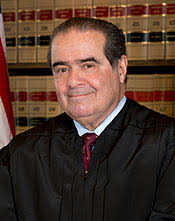
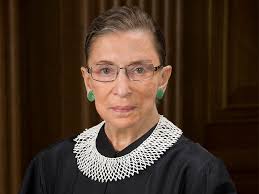
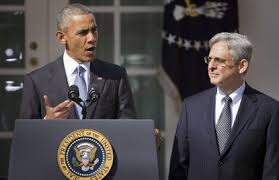

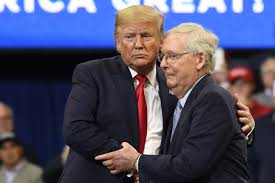




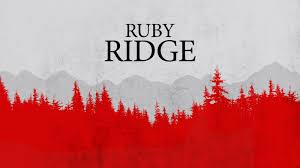



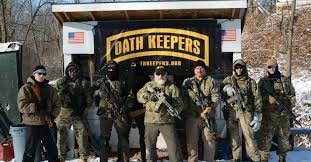








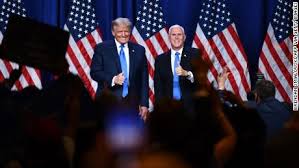




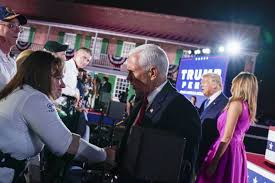
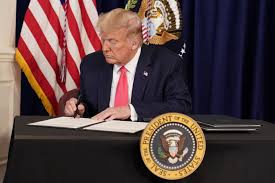
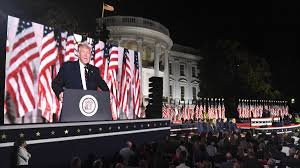

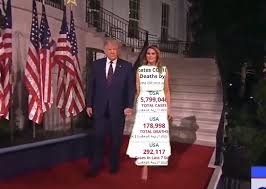



 RSS Feed
RSS Feed